A Polar Marine Science Conference on Sea Ice in the mountains of Tuscany
I am Sophia Hirschmann, a Ph.D. candidate in the microbial biogeochemistry group at GEOMAR Helmholtz Centre for Ocean Research Kiel. My research focuses on the dynamics of phytoplankton and organic matter in the Arctic Ocean, especially the Fram Strait. In particular, I am interested in specific processes, such as the melting of sea ice and Atlantification, and how these environmental factors shape phytoplankton community composition and influence the release of biomolecules, including amino acids and sugars produced by phytoplankton. As these compounds form the basis of the microbial food web, changes in their composition and quantity can strongly affect the remineralization and sequestration of organic matter, with far-reaching implications for the carbon cycle.
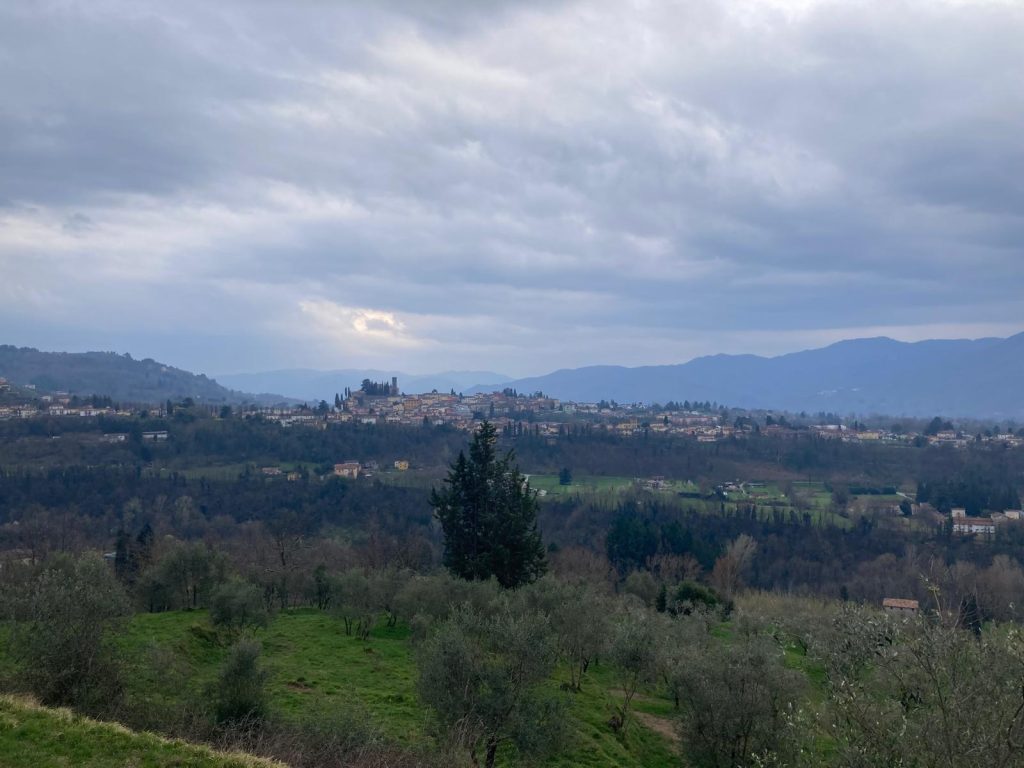
With the support of the FYORD Travel Grant, I was able to attend the 14th Polar Marine Science Gordon Research Conference in March 2025, which this time took place over the course of a week in Lucca, Italy. This conference series is held every two years, alternating between the USA and Europe, and is known for its unique format: It is aimed at researchers at all career levels and focuses on interdisciplinary discussions, emphasising new and previously unpublished research. To foster exchange, remote venues are chosen, and there are no parallel sessions. Presentations are only given by invited speakers. At 20 minutes, they last significantly longer than at most other conferences, thus allowing for a more in-depth introduction to the topic and are followed by plenty of time for discussion afterwards. Exchange is also encouraged outside the programme – for early-career scientists in particular, the shared meals and participation in organised leisure activities such as a cheese tour or wine tasting offer many opportunities to meet and network with other scientists. With around 120 participants, the conference is also fairly small.
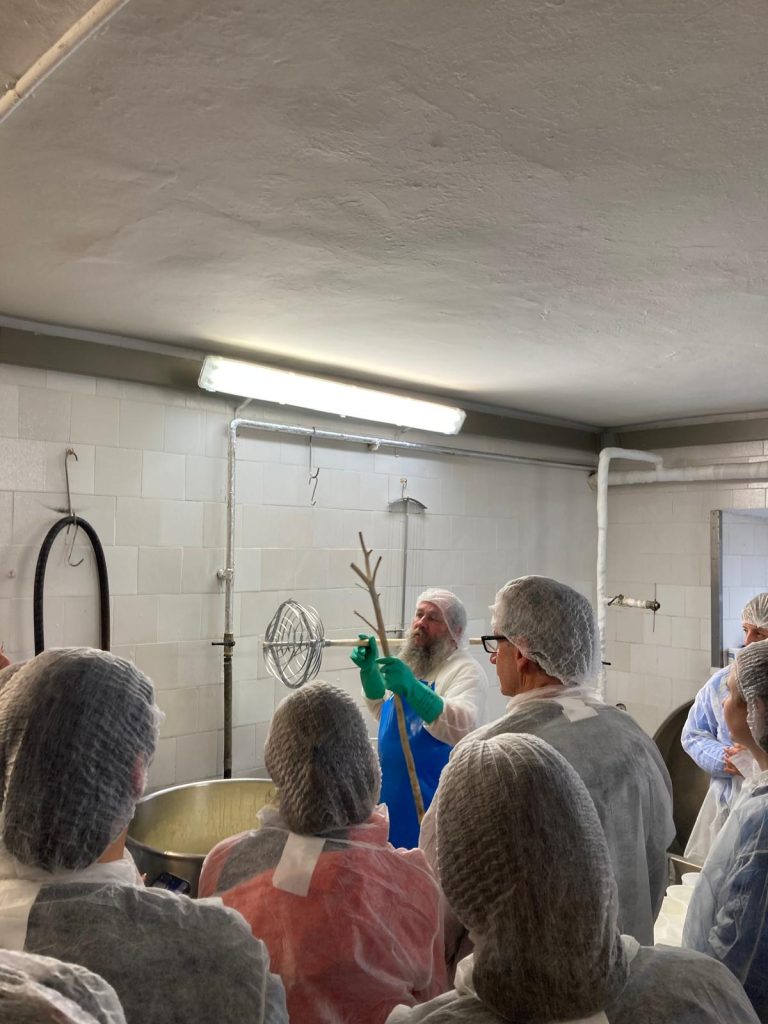
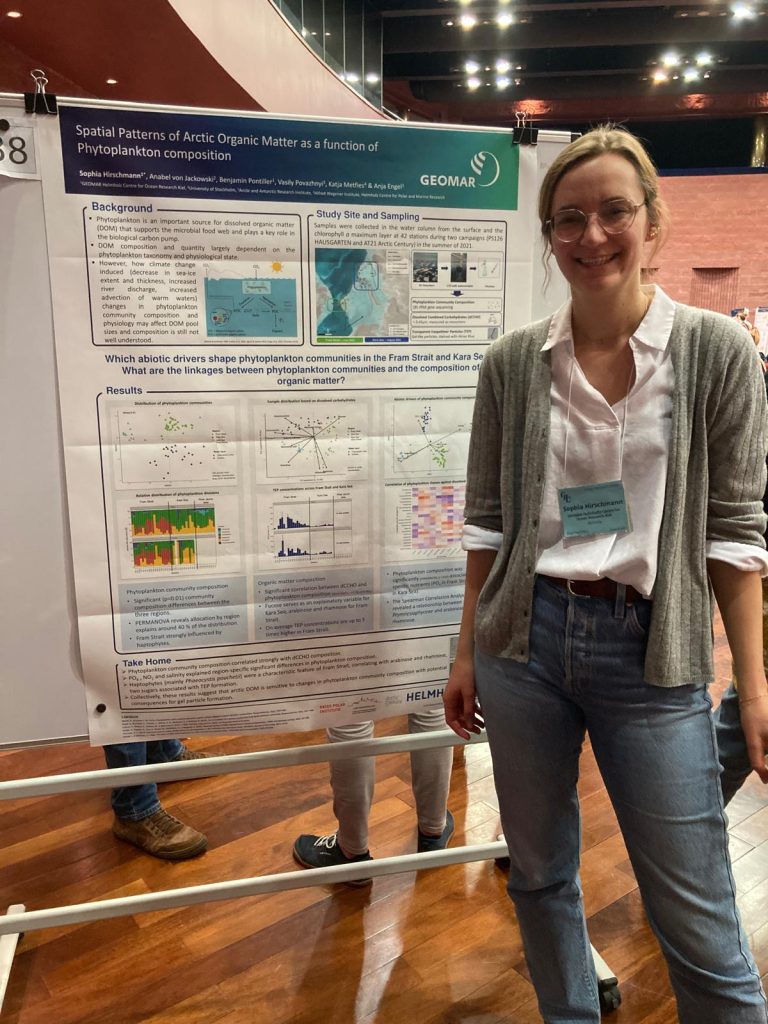
I presented a poster during the daily poster session, which was on display throughout the week, giving me the opportunity to discuss my research and get valuable input outside of the programme as well. Furthermore, I participated in the Polar Marine Science Gordon Research Seminar. This seminar took place two days before the start of the conference and is organised by early-career scientists for early-career scientists. There, we had the opportunity to get to know other doctoral students and postdocs in advance and meet experienced scientists who were available as mentors. As I attended on my own, it was a great way to present my results first in a smaller more comfortable setting and to already be familiar with a few people at the start of the conference. I received a lot of new scientific input as well as career advice and had many opportunities to network. Unfortunately, the conference is quite expensive, also due to its remote location. Nevertheless, I would definitely recommend attending the conference especially to early career scientists!
Sophia
International Symposium on Ice Streams and Outlet Glaciers
The International Symposium on Ice Streams and Outlet Glaciers, organized by the International Glaciological Society, brought together experts from the cryosphere community in Durham, United Kingdom, from July 21-25. For me, Chiara Alina Tobisch, a second-year PhD student, the FYORD Travel Grant was the perfect opportunity to give a talk about my research and meet colleagues working in the same field.
With a background in physics and geophysics, I am currently a PhD candidate in the working group of marine geophysics and hydroacoustics at Kiel University. Since the beginning of last year, the focus of my work has been on the East Antarctic Ice Sheet evolution imprinted onto the continental shelf. Therefore, I analyse geomorphological structures and the process by which they formed due to past ice shelf and ice sheet behaviour.
Unlike conferences such as EGU, symposia such as the Symposium on Ice Streams and Outlet Glaciers are more specific. Around 100 scientists specialised in this particular area of the cryosphere presented their work during the week. With over 55 talks and nearly 40 posters, there were plenty of opportunities to network, ask questions and plan future work during coffee breaks, lunch and dinner. As various attempts are made to gain insight into these complex and exciting environments, such a small symposium with just one lecture hall fosters discussion and provides the opportunity to focus on one specific setting with colleagues from diverse backgrounds.
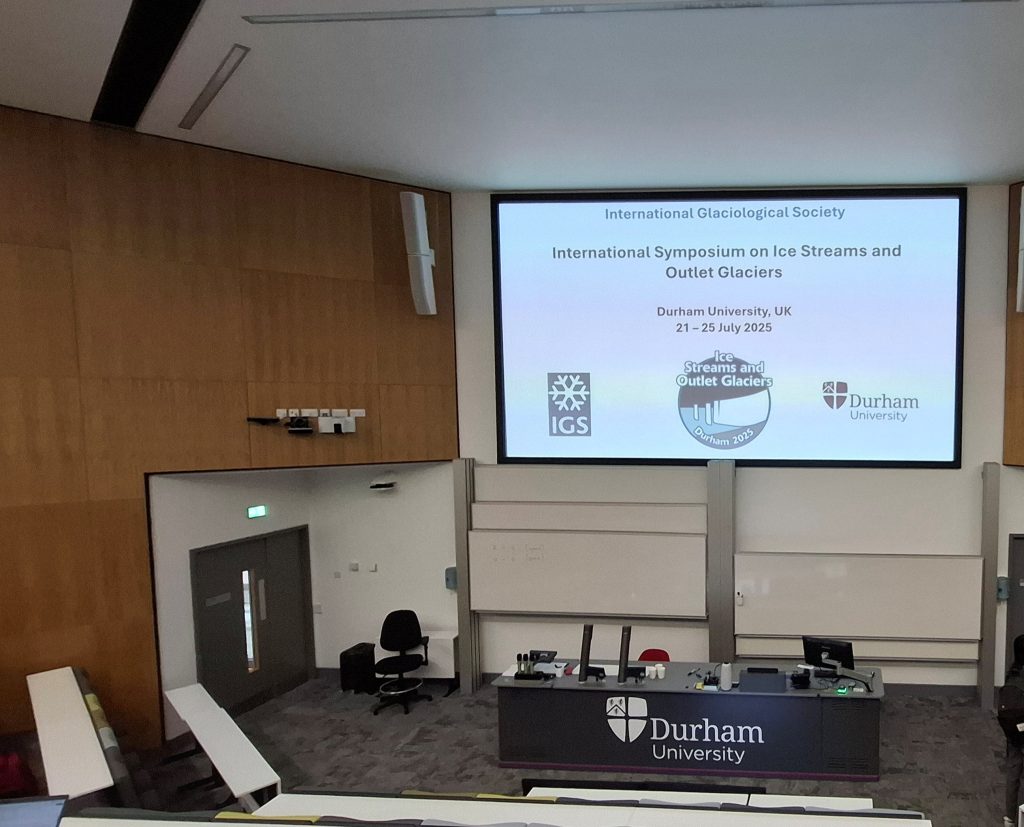
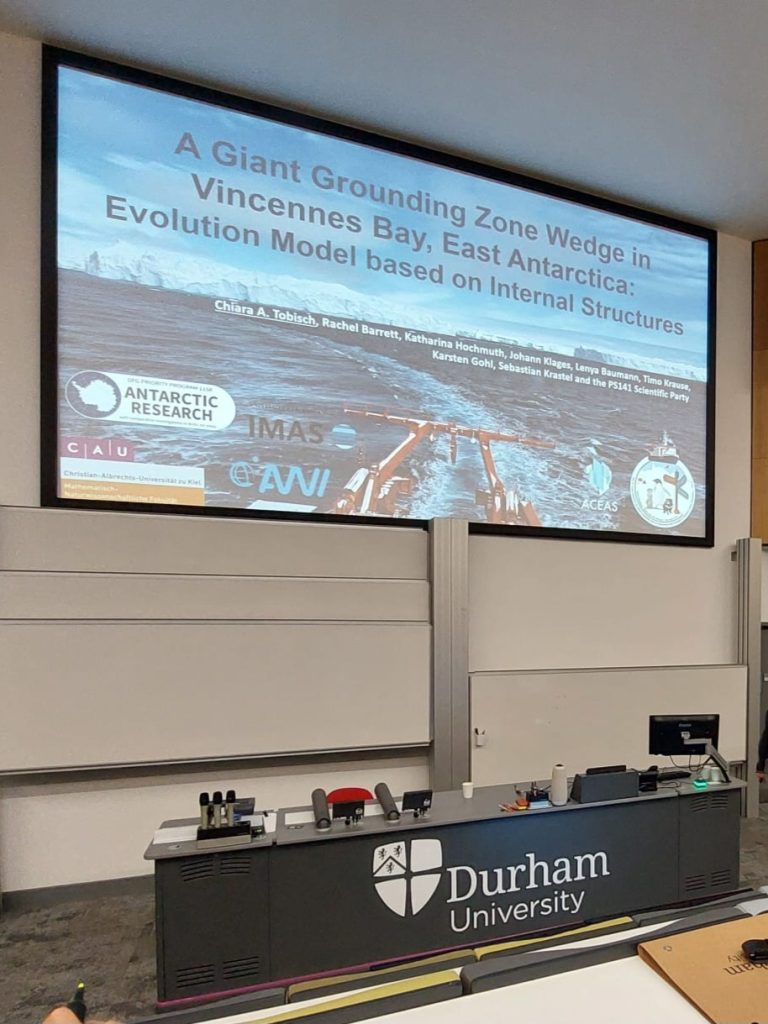
The invited keynote speakers, in particular, offered impressive insights into specific ice flow-related processes, gained through many years of experience. Honouring important researchers in this field for their work or engagement with the glaciological society provided valuable insights into development opportunities. The Early Career Researchers workshop was also worth mentioning, as two presentations provided guidelines and ideas on how to network successfully and get the most out of a conference or symposium. The clear statement by two native English speakers — a postdoctoral researcher and a professor — that it is the responsibility of English-speaking researchers to make science accessible to people of all nationalities was particularly motivating. They said that it is not our responsibility as non-native speakers to speak perfect English, but rather the duty of native speakers to try to understand and ask for clarification, and to speak slowly. This new approach made it quite easy to get in touch with people in this warm and friendly community. Everyone was helpful, and colleagues suggested others who might be willing to help and collaborate.
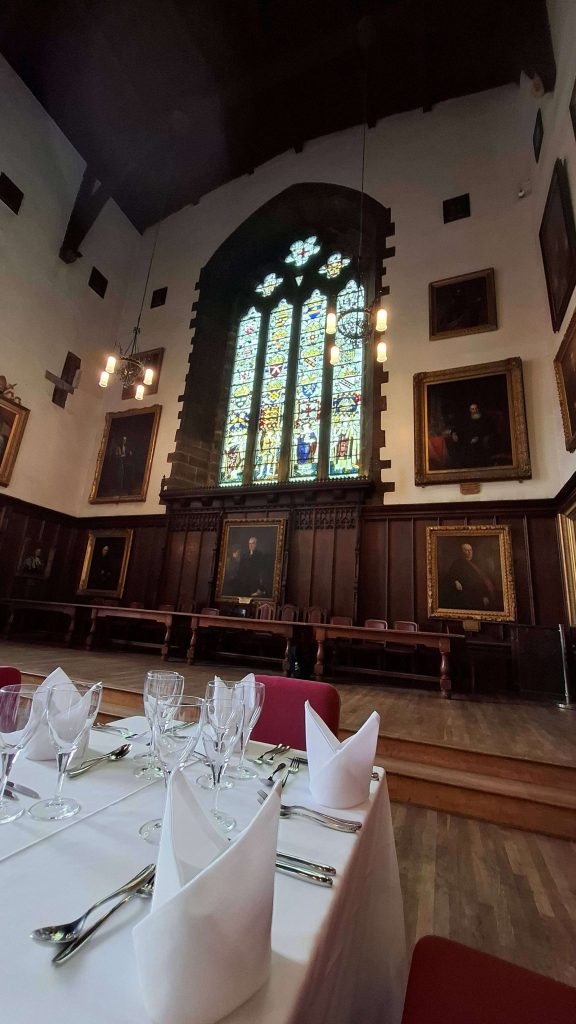
One of the highlights was the field trip, during which regional experts explained the glacial history and preserved geomorphology of palaeo-ice stream beds in northern England. It was impressive to see such structures in the landscape and to be able to walk on them, since they are located about 500 metres below sea level in my research area in Antarctica. The excursion provided a welcome mid-week break and gave participants again the chance to meet many new colleagues, as did the conference dinner held in Durham Castle’s impressive Great Hall. It was a wonderful and informative week. I enjoyed exchanging helpful discussions, questions and thoughts with colleagues in this warm and welcoming community!
Chiara
Goldschmidt Conference, Prague
Hi! I’m Bianca, a post doc at GEOMAR, where I work in marine isotope geochemistry.
My research focuses on using isotopes as tools to better understand how elements cycle through the ocean. Right now, I’m particularly interested in barium and neodymium. These two elements behave in very different ways: barium is closely tied to biological activity and is often used as a proxy for ocean productivity, while neodymium isn’t influenced by biology at all —and has been used as a water masses tracer. By looking at both elements in the same set of samples, I can answer a wider range of questions about ocean processes and element cycling.
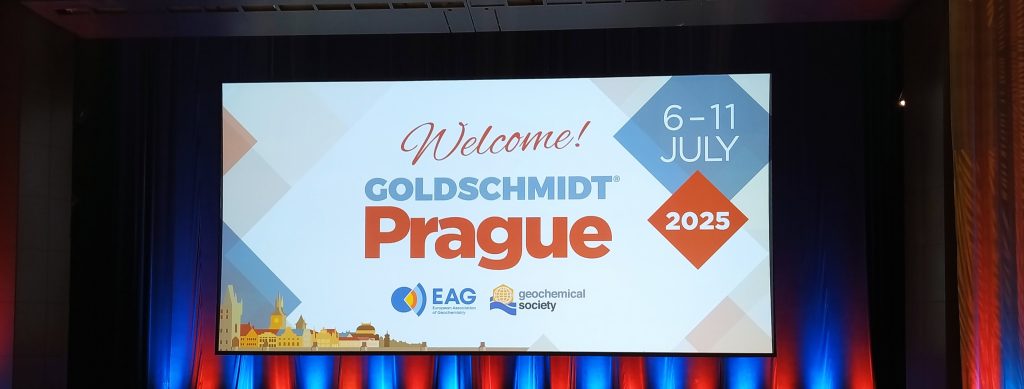
This July, I had the chance to attend the Goldschmidt Conference 2025 in Prague, Czech Republic, with the support offrom a travel grant from FYORD. Goldschmidt is one of the biggest international conferences in the field of geochemistry, bringing together thousands of researchers every year. This time, around 3,500 scientists from all over the world met at the Prague Congress Centre from July 6–11 to share the latest scientific findings and to network.
At the conference, I presented a poster titled “Constraining the Equatorial Pacific barium cycle with stable barium isotopes” as part of a session on marine trace elements (Tracing marine trace element dynamics: impact of external sources and oceanic cycling). This session was part of the broader GEOTRACES programme, an international program focused on increasing our understanding of marine biogeochemical cycles by studying the distribution and behaviour of trace elements and their isotopes in the ocean.
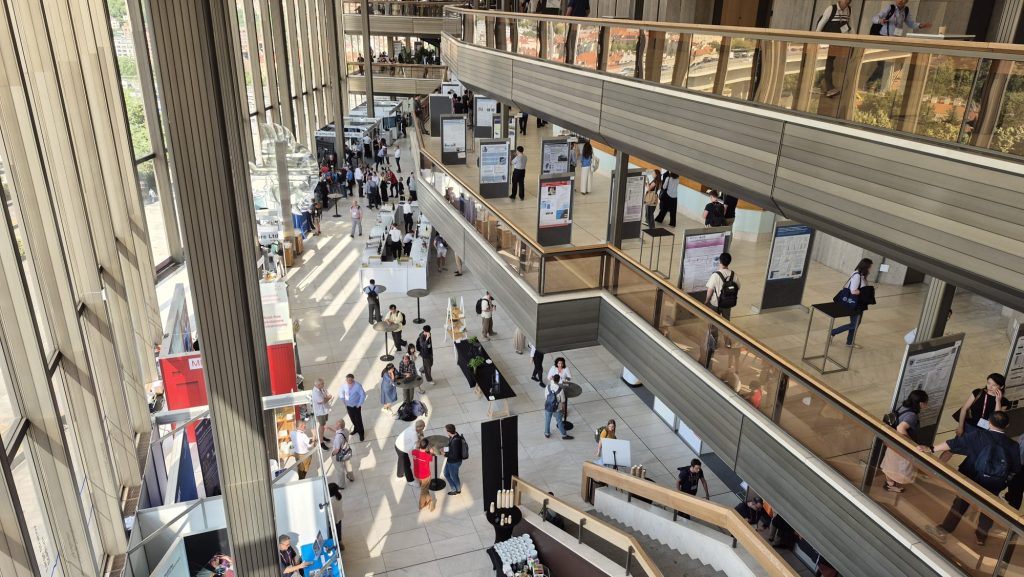
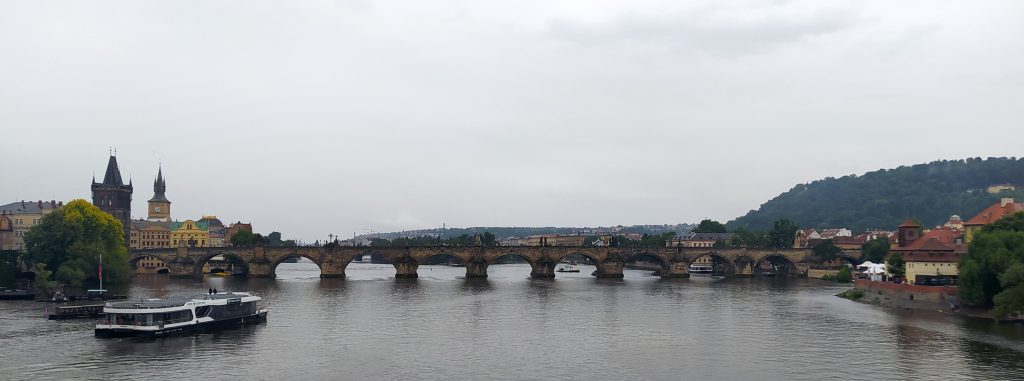
Presenting a poster gave me the chance to have longer, more in-depth conversations about my research. Over the two-hour session, I got some great feedback and fresh perspectives from other scientists. While posters might not get the same visibility as oral presentations, I found the discussions to be more meaningful, and the insights I received will definitely help as I prepare to publish my findings and wrap up my work at GEOMAR.
Beyond the science, Goldschmidt was also a fantastic space for networking, with activities organized by the conference. I met other early-career researchers over coffee breaks, evening socials, and casual dinners. We didn’t just talk about research—we also shared experiences about academic life and career paths. I also connected with senior scientists whose advice and encouragement were incredibly helpful. The atmosphere was friendly and welcoming, which made it easy to start conversations and build new connections.
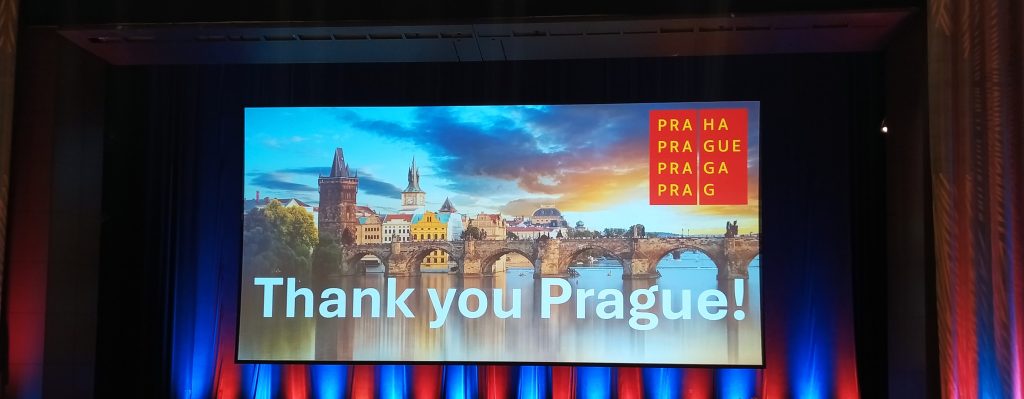
I’m really grateful to FYORD for making this experience possible. Attending Goldschmidt 2025 was both professionally rewarding and personally inspiring. I came back with new ideas, potential collaborations, and a renewed sense of motivation for my research.
Bianca
